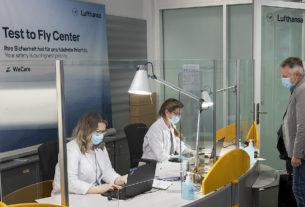–Architecture, culture, gastronomy, wineries and culture, attract thousands of visitors every year
Although it is a relatively small country, Serbia stands out for its diversity. Each region has its own particularities, with cultural, architectural, climatic and other differences. Novi Sad and Subotica in the north of the country are two of its largest cities, rich in history, sightseeing, natural beauty and many other reasons that make it an attractive destination for visitors of all tourist preferences. Both cities can be reached by air via Belgrade Airport.
Welcome to Novi Sad
Novi Sad, Serbia’s second largest city after Belgrade, is distinguished by its architecture, its harmonious coexistence with the impressive historical fortress of Petrovaradin, also known as “Gibraltar on the Danube” due to its geostrategic importance from Roman times to modern times, for its multiculturalism, as here one can feel the vibrant heterogeneous mosaic of the city that is formed by the 20 minorities that share it in harmony, for its cultural events, for the calm rhythm of everyday life, which is different from the fast, chaotic pace of any other modern city.
The clock in the castle urges the visitor, almost imposes, to climb up there to enjoy the view of the city. A city built on the banks of the Danube that is worth walking around, visiting its parks, its natural beauties, its picturesque squares, exchanging a friendly chat with a local and tasting the traditional dishes of the Balkan cuisine. The pulse of Novi Sad’s authentic tranquillity beats outside the town in the ancient Salas farms, the Danube’s fish taverns, the beaches and the sites of Mount Fruska Gora.
Novi Sad, a city with centuries of European history and tradition as well as Balkan hospitality, is an experience every person should have.
Before arriving in the city find out more information from https://visitns.rs/en/.
Fruska Gora
Mount Fruska Gora is the oldest national park in Serbia. The richness of fauna and flora, the thermal baths and spas in Vrdnik, lakes, hiking areas and paths in the forest provide the best conditions for rest and relaxation in nature, as well as for sports, such as hiking, cycling, hunting and fishing. Fruska Gora is also known as “The Holy Mountain of Serbia”, thanks to its 16 monasteries, which for centuries have been a core of spiritual life for Serbs and at the same time centres of teaching, literature and fine arts.
The surroundings of Novi Sad, especially at the foot of the Fruska Gora, are famous for their wines. The most notable are: Sremski Karlovci, Iring, Banostor and Sid. With a visit to the wineries of the region to taste the wines, the traveller will learn a lot about the long tradition of viticulture, some little secrets of the winery and above all will be filled with experiences and images of the pleasant atmosphere and tastes of the specialties of the local cuisine.
In Salas
The Salas farms, which are traditional village houses, with outbuildings around the courtyard, are located in the plain of Vojvodina and at the foot of Fruska Gora. In a typical environment of the villages of Vojvodina, under the shade of orchards, with the smells of traditional food tickling the palate, quality wines and raki made from local fruit and to the sounds of tambourine music, you will involuntarily pause in time and give in to the pleasure of the moment. Don’t hesitate to ask for information about overnight stays as some Salas have rooms to let with authentic traditional furniture in the “Alt Deutch” style and horses for riding.
To the tsars
Delight for all the senses on the banks of the Danube, you will find in the famous tsars, the local fish taverns located on the banks of this great river. You will confirm this by the taste of the fish soup and the dishes of goulian, carp, perch and sturgeon accompanied by wines of Fruska Gora and of course accompanied by the music of tambouras!
Subotica – the city of Art Nouveau
The Town Hall, Subotica Synagogue, Reichl Palace and dozens of other elegant buildings highlight Subotica as a European Art Nouveau city. Loose, unrestrained forms, full of rounded lines and wavy touches, unusual color combinations instead of monotonous gray, are the first element a foreign visitor notices when arriving in Subotica. In addition to the Art Nouveau buildings, for which it is known, the image of the core of the city is complemented by numerous buildings built in various other architectural styles.
Subotica, the fifth largest city in Serbia, is located in the north, near the border with Hungary, on the route of major European roads and between the catchment areas of two rivers, the Danube and the Tisza. Subotica was founded in the Middle Ages and in it the cultures of northern and central Europe as well as the Balkan culture were melded over the centuries. Today it is a city of about 150,000 inhabitants, characterized by a multi-ethnic and multicultural environment. Built literally in a swamp, it now rises as a modern European city – a centre of culture, art, sport and entertainment, and a major economic and tourist centre. Indeed, in recent years it has been developing particularly well as a conference destination. Subotica is also a gastronomic centre, while it also stands out for its cafes and café-bars, which are the “trademark” of the city, because they are a favourite meeting and relaxation point for young and old, from early morning until late at night, bringing the city to life.
Rich cultural heritage, culture, elegant architecture, multicultural spirit and European charm are the details that make it stand out, while festivals, concerts, theatres and galleries are another reason why Subotica attracts thousands of visitors every year.
The nature
Apart from the town itself, Subotica has many interesting sites in the surrounding area, such as lakes – Palic and Lundas – horse farms, farms, forests and hunting grounds. Palic, the lake and the village of the same name are located eight kilometres north of Subotica. Impressive buildings from the early 20th century, luxurious parks, the lake, peace and quiet make Palic an ideal place for a holiday. Luxury hotels and villas and top gastronomic options are the features by which Palic is recognized and remembered.
In addition, about twelve kilometres east of Subotica, there is a special natural reserve – Lake Lundas, where flocks of migratory birds travelling from the Norwegian fjords to the Nile River find their resting place. This is one of the most important lake-wetland ecosystems in Europe and is protected by the Ramsar Convention.
Wines from the sand
Wine lovers know that when they go to Subotica and its surroundings, they will not be disappointed, because Subotica wines, the “wines from the sand”, are known for their harmonious taste, intense aroma and softness. The soil, climate and quality grape varieties determine the character and taste of these wines. The winemakers and vine growers of the region have created the Wine Route, giving visitors the opportunity to visit the numerous wineries and cellars and taste their masterpieces.
Accommodation and information
Dozens of hotels in Subotica and Palic provide a variety of accommodation options and there are countless other tourist accommodations available. Hotels, tourist apartments, farms and guesthouses are characterized by traditional local hospitality and high quality services.
For all interested visitors, the Subotica Tourist Board (https://visitsubotica.rs/en/) organises free tours of the town centre and of Palic.




